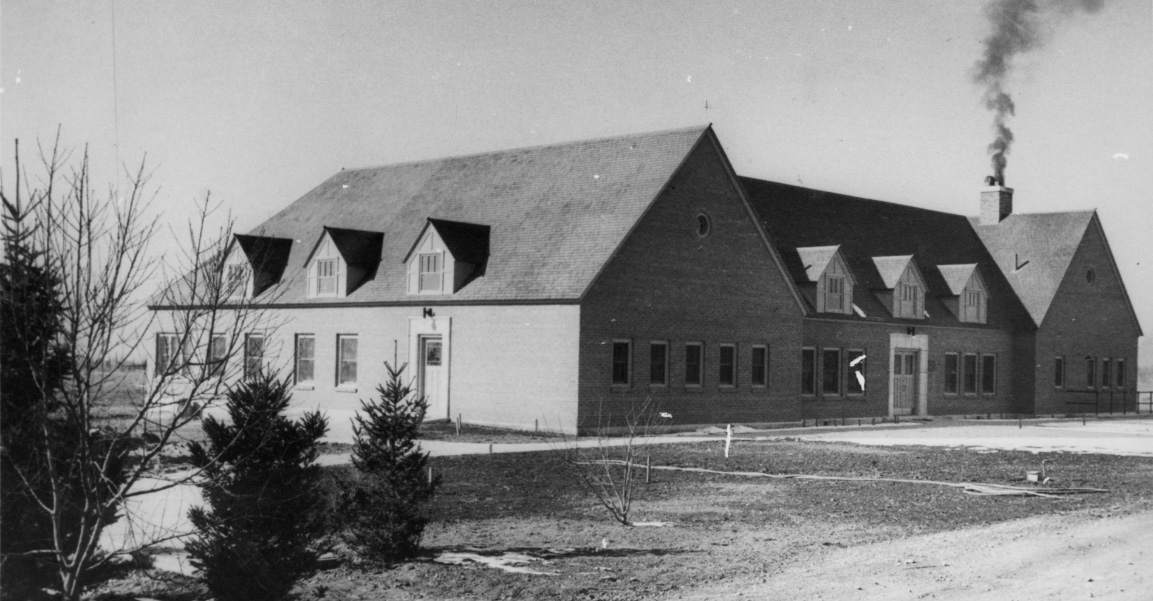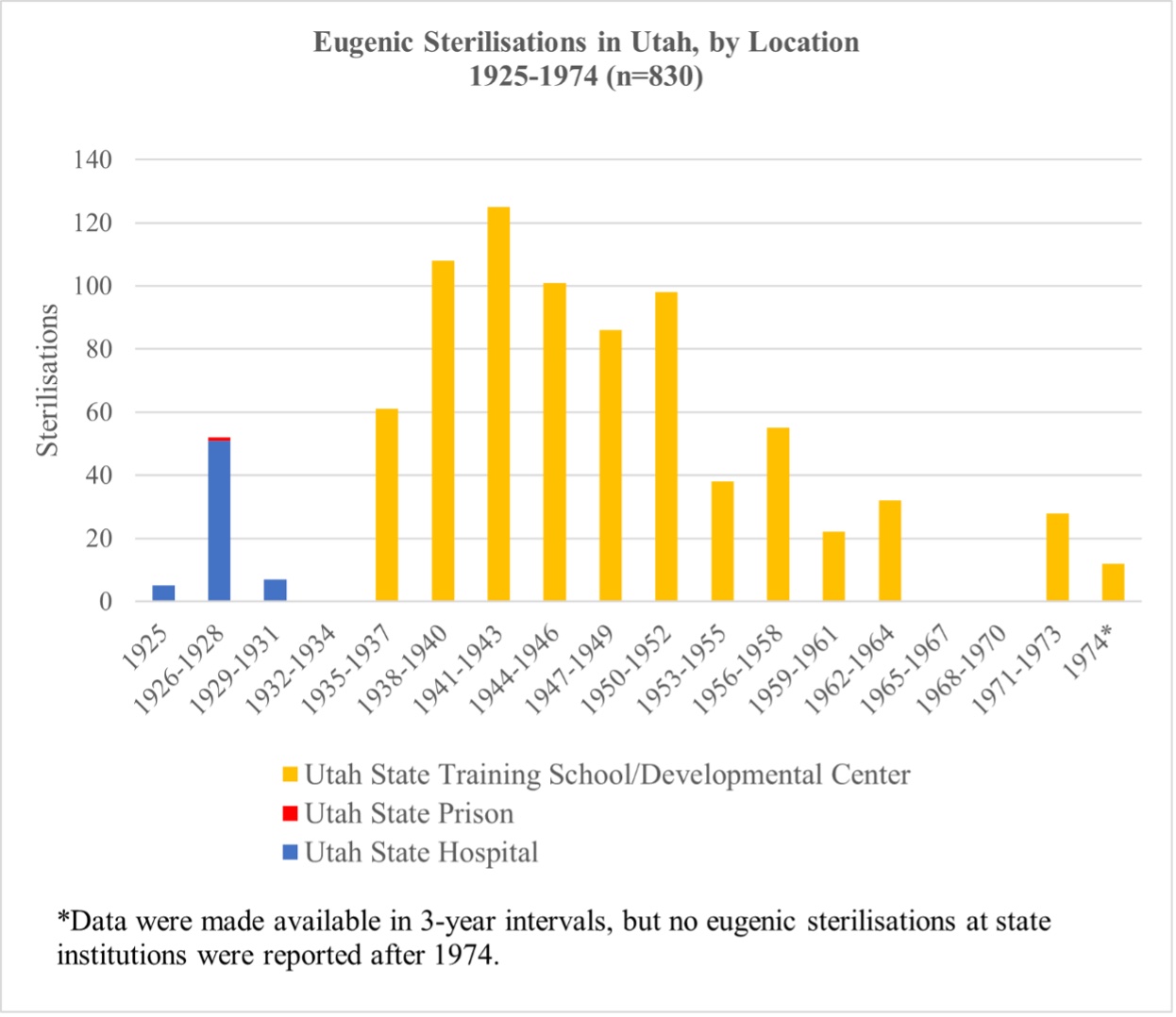Survivors of Utah’s Eugenic Sterilization Program Still Alive in 2023
New study reveals scale of coerced sterilization in Utah
![]()
JANA CUNNINGHAM
At least 830 men, women, and children were coercively sterilized in Utah, approximately 54 of whom may still be alive. They were victims of a sterilization program that lasted for 50 years in the state and targeted people confined to state institutions. Many were teenagers or younger when operated upon; at least one child was under the age of 10.
“For the first time, we have a sense of the human scale of the eugenic assault here in Utah, as well as the lasting legacy of that assault in the form of survivors still living in 2023,” said James Tabery, a professor in the Department of Philosophy at the University of Utah and lead author of the paper reporting the results, which appeared on February 15, 2023, in The Lancet Regional Health - Americas.
THEIR STORIES HURT OUR HEARTS.
EUGENICS IN AMERICA AND IN UTAH
Utah was one of 32 states that passed legislation permitting the sterilization of people on eugenic grounds. The eugenic movement was popular across the United States in the early-20th century. It mixed pseudoscientific ideas about the existence of genes for complex traits like criminality and poverty with racist and ableist biases about what lives were worth living to make judgments about who in society was “fit” and worthy of bearing children and who was “unfit” and unworthy. All told, more than 60,000 people were sterilized across America as part of the effort to mold human populations into the eugenic ideal. Utah’s sterilization law was first passed in 1925, authorizing the sterilization of people institutionalized at the Utah State Hospital, Utah State Prison, and Utah State Industrial School and deemed to be “habitually sexually criminal, insane, idiotic, imbecile, feeble-minded or epileptic, and by the laws of heredity is the probable parent of socially inadequate off-spring likewise afflicted.” When the Utah State Training School (now Utah State Developmental Center) opened in the early 1930s to care for the “feebleminded,” the law was revised to include patients there too.
THE VICTIMS OF EUGENIC STERILIZATION
Tabery and his coauthors—Nicole Novak, assistant professor at the University of Iowa, as well as Lida Sarafraz and Aubrey Mansfield, two graduate students at the University of Utah— provide several examples of the terrible harm done by Utah’s sterilization program. In one case, when a teenage girl, in 1928, told her local religious leader that she’d been repeatedly raped by a family member, the man did not believe her. Instead, she was admitted to the Utah State Hospital, diagnosed as a “moron” and sterilized. After her release, that same man admitted she was probably being sold as a sex worker by another family member. In another case, in the 1970s, a teenage boy at the Utah State Training School learned
that he was scheduled for sterilization. His initial reaction was violent objection, motivated by his desire to have children. As time went on, however, he resigned himself to the fact that there was little he could do to prevent the operation. The paper, “Victims of Eugenic Sterilisation in Utah” documents how those tragic cases evolved over time. When the state-sanctioned sterilizations began in 1925, they occurred almost exclusively at the Utah State Hospital in Provo, Utah, and more often targeted men than women. When the Utah State Training School opened several years later, the vast majority of the sterilizations shifted to that institution in American Fork, Utah, where the program captured a younger population and shifted to sterilizing more females than males. The institutionalized program peaked in Utah in the 1940s and didn’t end until 1974. Utah had a particularly aggressive sterilization program. Eugenics leaders, in fact, hailed Utah for sterilizing a far greater proportion of its residents than any other state in 1947 as an “important achievement in public health.”
THE “STUBBORN PERSISTENCE” OF STERILIZATIONS IN UTAH
“One striking feature of Utah’s sterilization program,” according to Tabery, “is just how long it lasted.” Many states ramped down their sterilization programs in the 1940s and 1950s. This was partly in response to the horrific revelations that came at the conclusion of World War II. Nazis in Germany eagerly embraced American eugenics, taking it to its grizzly zenith by declaring entire racial and ethnic groups “unfit.” As concentration camps were uncovered across Europe, the shocking culmination of that eugenic vision became plain for all to see. There were also scientific forces working against eugenics. Human geneticists, by the mid-20th century, made it clear that there were no simple genes for criminality or poverty, and so no amount of sterilization would eliminate those problems from society.

A 1942 image of the Utah State Training School in American Fork, Utah, where the majority of the eugenic sterilizations in Utah took place. Photo credit: Used by permission, Utah State Historical Society
All told, more than 60,000 people were sterilized across America as part of the effort to mold human populations into the eugenic ideal.
The Utah legislature worked around those developments by changing the rationale for its sterilization program in 1961. With no biological support for the program, the lawmakers swapped out the genetic justification with a new rationale for sterilization, arguing that institutionalized people could be sterilized if they were deemed “unlikely to be able to perform properly the functions of parenthood.” As one Utah newspaper from the era summarized the legislative shift, “Instead of having to prove a genetic defect, it is now necessary only to show that a person is not and has no chance of becoming a fit parent.” Tabery and his co-authors describe the “stubborn persistence” of the sterilization program in Utah as particularly egregious. Intentionally seeking a lower scientific threshold for sterilizations allowed the program to continue well into the 1970s, long after many other states shuttered their eugenic initiatives.
A NEARLY COMPLETE PICTURE OF EUGENIC STERILIZATION IN UTAH
The publication includes demographic information (e.g. sex, race/ethnicity, year of birth) on almost every documented case of eugenic sterilization that took place in Utah. Of all the known cases that occurred, only about two dozen are missing from the data set, providing a nearly complete picture of who the eugenic program targeted over the years.
This is particularly noteworthy because there was no single eugenics board overseeing the sterilizations in Utah. Instead, they were controlled by administrative staff at the state hospital, state prison and state training school. (The Utah State Industrial School, formerly of Ogden, UT, was authorized to perform sterilizations, but no procedures were recorded there.)
 Timeline of eugenic sterilizations in Utah, from “Victims of Eugenic Sterilisation
in Utah,” by James Tabery, Nicole Novak, Lida Sarafraz, and Aubrey Mansfield.
Timeline of eugenic sterilizations in Utah, from “Victims of Eugenic Sterilisation
in Utah,” by James Tabery, Nicole Novak, Lida Sarafraz, and Aubrey Mansfield.
Data for the study was derived from a deidentified database compiled by staff at the Utah State Developmental Center, as well as a masters thesis written by a University of Utah graduate student from 1932 which reported on cases of eugenic sterilization from that time. The research was funded by grants from the National Human Genome Research Institute at the U.S. National Institutes of Health. Neither the Utah state institutions nor the funder played any role in the design or administration of the study.
ESTIMATING THE NUMBER OF SURVIVORS LIVING IN 2023
With information about sex, year of birth, and age at sterilization, the research team was able to estimate the number of sterilizations survivors still living in 2023: approximately 54 (36 women and 18 men), with an average age of 78. Many states, when faced with their own abhorrent history of eugenics, have begun reckoning with that awful past. Governors and legislators have issued official apologies. Historical markers have been installed. Several states have even created compensation programs for the survivors of their programs. In response to Tabery’s findings and the release of this article, the Utah Department of Health and Human Services issued the following statement on February 17, 2023:
“The Utah Department of Health and Human Services offers our deepest apologies for the loss, anxiety, trauma, and lasting side effects our friends and neighbors have suffered as a result of the state’s past non-consensual sterilization program. Their stories hurt our hearts. We are grateful for the researchers who shared these stories so we have the opportunity to officially apologize to those affected and redouble our commitment to making Utah better and safer for everyone. Thankfully, the state has come a long way and there are now measures in place to protect people with disabilities. The current services we offer for those with intellectual disabilities focus on making sure a person can live their life as independently as possible—including having the option to marry or have a family if that is what a person wants. When people with disabilities can participate fully in their communities, it betters their lives and strengthens the community as a whole. We are in the process of trying to identify any individuals still living who underwent these procedures. We plan to issue personal apologies to any individuals we are able to identify. While an apology cannot right the wrongs that were committed, we recognize the importance of acknowledging and understanding this history so we can learn from it and do better both now and in the future.”
